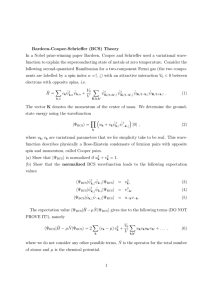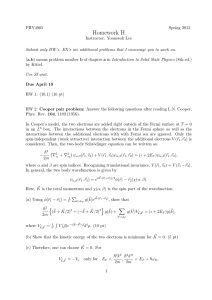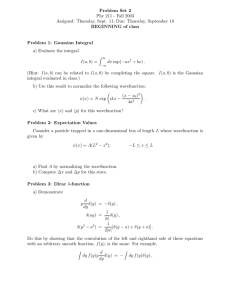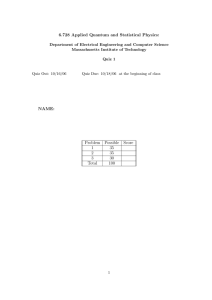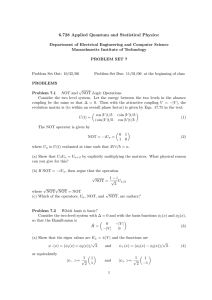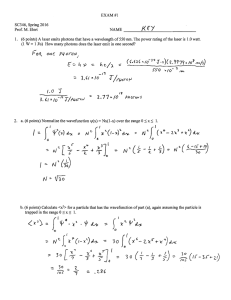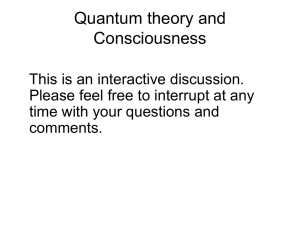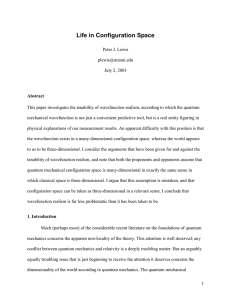1 The twobody problem with attractive ... is reviewed. Cooper, in 1956, ...
advertisement
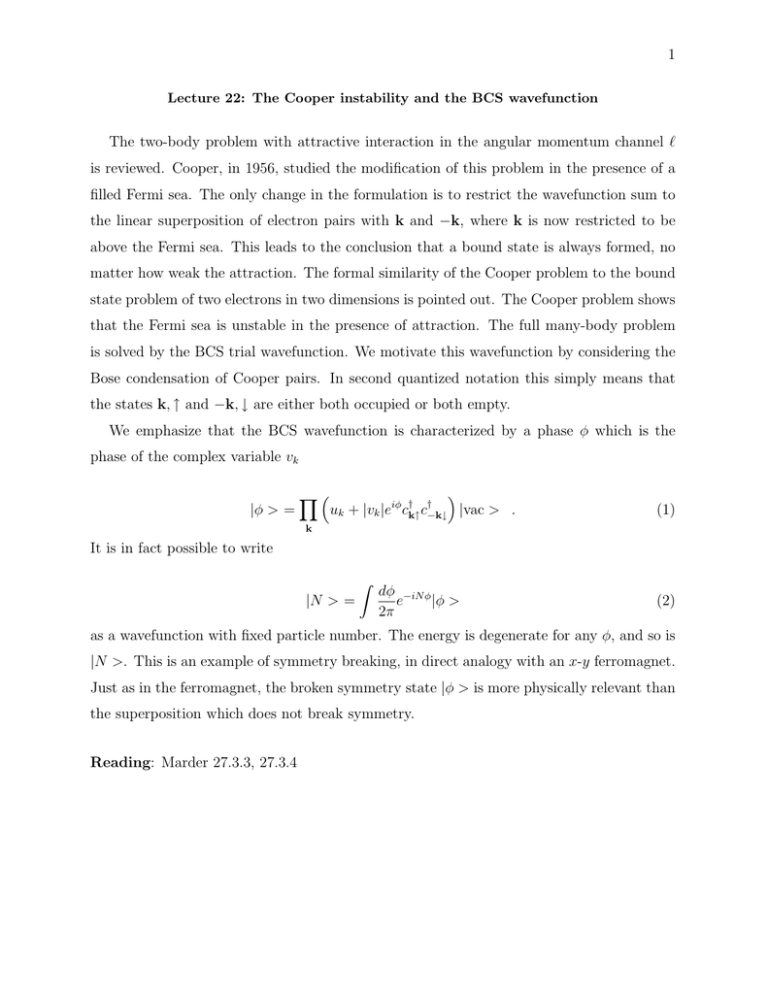
1 Lecture 22: The Cooper instability and the BCS wavefunction The two­body problem with attractive interaction in the angular momentum channel � is reviewed. Cooper, in 1956, studied the modification of this problem in the presence of a filled Fermi sea. The only change in the formulation is to restrict the wavefunction sum to the linear superposition of electron pairs with k and −k, where k is now restricted to be above the Fermi sea. This leads to the conclusion that a bound state is always formed, no matter how weak the attraction. The formal similarity of the Cooper problem to the bound state problem of two electrons in two dimensions is pointed out. The Cooper problem shows that the Fermi sea is unstable in the presence of attraction. The full many­body problem is solved by the BCS trial wavefunction. We motivate this wavefunction by considering the Bose condensation of Cooper pairs. In second quantized notation this simply means that the states k, ↑ and −k, ↓ are either both occupied or both empty. We emphasize that the BCS wavefunction is characterized by a phase φ which is the phase of the complex variable vk |φ > = �� � uk + |vk |eiφ c†k↑ c †−k↓ | vac > . (1) k It is in fact possible to write � |N > = dφ −iN φ |φ > e 2π (2) as a wavefunction with fixed particle number. The energy is degenerate for any φ, and so is |N >. This is an example of symmetry breaking, in direct analogy with an x­y ferromagnet. Just as in the ferromagnet, the broken symmetry state |φ > is more physically relevant than the superposition which does not break symmetry. Reading: Marder 27.3.3, 27.3.4
